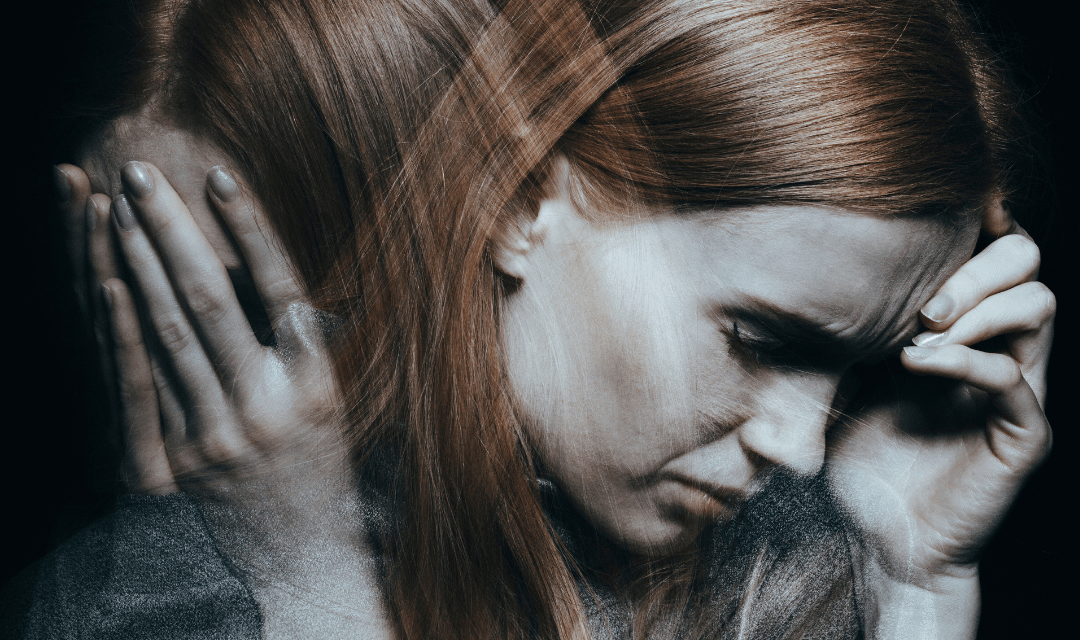Anxiety in the Times of COVID-19

As many have acknowledged already, anxiety is on the rise because COVID has affected most of our lives in significant ways. At this moment, both active cases and death rates have escalated. This fact alone serves to escalate our fears and anxiety.
Prior to COVID-19, very few of us dealt with daily threats to our existence, but this did not thwart our struggles with anxiety. Now, with COVID added to our lives and the very real additional threats that exist, many are struggling with levels of anxiety that are truly debilitating.
In a sense, this unique situation brings a triple-dose of anxiety. First, there are the broad-based fears of the impact upon our society, the stock market, and our social-economic world. These are uncontrollable events that add to a create a general sense of fear. The thought perhaps, ‘I should be worried” is constantly reinforced by the media, as well as friends and family. Strike one.
We must add more to this already overwhelming picture, however, as the very real threat to our safety, or the safety of those we love, comes from getting COVID. We could get very sick, be hospitalized, and potentially lose our life. While portions of staying safe may be out of our control, it is also clear that smart action significantly serves to protect us from the most intimate stress of getting the virus. We must be vigilant today, to remain smart and to take smart action. This is stressful. Strike two.
Yet, this mess isn’t over. The challenges, while perhaps we handled well today, are not yet over. Thus, we wake up every day, and if wise, we must continue to take smart action to stay safe. This again adds an element of stress that we now must cope with daily. And we don’t know for sure when this will end. Our normal fight-flight response is activated and reactivated, with no end in sight. Strike three.
The triple play of anxiety generators…all coming together now to make these times among the most trying.
Fight or Flight: The Brain’s Natural Response
Over the many thousands of years that mankind has evolved, there was a need for daily vigilance to remain alert and ever-present to the threats that could take our lives. The threats were clear, and our bodies adapted to rapid changes in our states when fight or flight was necessary.
The priority was survival, not happiness. As a species, we were not doing so well for many thousands of years. Infancy survival rates were low, and many children did not live to propagate.
Now, for most of us in this fortunate world we live in, our priority has shifted to happiness more than survival. Yet, our brains did not catch up with us. The centuries of programming have kept us vulnerable to fight/flight tendencies, and thus the experience of anxiety.
So, in the modern world, we are seeking happiness with some biological hardware that is wired to notice the threats more than the daily gifts we experience.
Prior to COVID-19, very few of us dealt with daily threats to our existence, but this did not thwart our struggles with anxiety. Now, with COVID added to our lives and the very real additional threats that exist, many are struggling with levels of anxiety that are truly debilitating.
How to Reduce Anxiety Starting Today.
As you go through these steps, I encourage you to be a thorough tester, not a quick naysayer. Those folks want the easy, quick answer. And they want the grand slam effect. True change means changing a habitual set of neural pathways that are well-worn in the brain. We must accept this if long-lasting relief is what we seek.
1) Anxiety is not a thing. It is a fluid process.
This is much more important than it appears. We know from measuring brain waves and bodily responses that anxiety is not static, but our minds tend to make it so. We label it a ‘thing’ and as such it becomes more fixed than it is. So, our first step is to begin to raise our awareness of the fluidity of this process. Anxious feelings move with our thinking, but many of us just notice our feelings that then follow from the anxiety producing thoughts.
Become less a believer of your thoughts, and more of an investigator. We identify with our thoughts, rather than have curiosity. This curiosity creates some detachment from the thought and starts us down the path to a more easeful experience of life.
2) Acknowledge: There is no threat right now.
We must do everything we can to de-activate the fight/flight response, so this is the next step. Clearly see that right now, there is no threat. You might say, ‘COVID-19 is right outside my door.’ And I would say, ‘really?’ Step outside and see if that is true. In other words, be intensely practical with yourself, and clear on what threats exist right at this moment to you. Most likely, none exist right now.
If a threat does exist, be clear on your plan. What steps can you take and are you taking them? If so, this is all you can do.
So, we now affirm, with conviction, ‘There is no threat at this moment. I have done all I can do.” Will this immediately make it all go away? No, but it is the first step. DSay it to yourself, clearly and with conviction. The more we leave this moment, and move to tomorrow, next week or next month…then we will have anxiety! Because the imagination can create limitless ways to be afraid for moments we do not have to cope with right now.
Rather than believing the threat exists right now, consider affirming the truth of this very moment (which applies to most reading this article), ‘there is not threat right now. I can relax a bit.’
3) Be more attentive to small daily actions.
This process is not easy, yet it is remarkably simple and effective. If you can accept that there is not threat right now, turn your attention to whatever you are doing. At this moment, I am noticing the feel of the keyboard on my fingertips, and turn my toes wiggling in my socks. It is these simple acts of present awareness that start to force us into the moment. Do more and more of this, as you focus being present with your actions.
Secret Juice: Bring to your awareness those actions that are not typically in your awareness, such as your breathing or your eating or even brushing your teeth. Slow these down a bit, and just be aware.
I also encourage you to do some quick research on Heart Rate Variability (HRV) Breathing, as this is a simple breathing process with proven results. Start to practice HRV breathing two to three times daily. The impact will be substantial (if, and only if, you stick with it).
4) Stay away from anxiety producing content.
I find many folks struggling with anxiety spending significant time-consuming anxiety producing content. Why do this? There is little value here, and the answer is to stop. Stop today. Instead, go for a walk, sip your tea gently on the porch or spend some time doing something you love. If you must be on your phone, then start seeking content that inspires, uplifts and gets your brain tuned away from fearful content.
We can all be safe, wearing our masks and keeping our distance as we accept the reality of life for now. It will not be forever, and there is no value in railing against what keeps us and others healthy. The fundamentals of what we must do have not changed in months, and thus limit consumption of any content that heightens anxiety. It only makes common sense.
There are many tools that will reduce anxiety incrementally. Rapid changes are available, but none sustain without effort. All the above suggestions take effort, daily to re-program the brain. If this is accepted, then progress is not just possible…real relief is probable.
But Dr. Cale, I Can’t Seem To Control My Anxious Thoughts!
As you might imagine, I hear this quite a bit. Many of you grew up with anxious parents or have experienced trauma, chronic stress, or unfortunate accidents that have caused brain changes. Or there may be a variety of other factors that cause our brains to run in ways that do not serve us. And these are often entrenched deeply in the neural pathways that are chronic and hard to change.
Do not dismay! There is hope for permanent, lasting changes that can change thought patterns.
How is this done? Not medication, of course, as this comes with questionable results and long-term side effects. And, unfortunately, therapy is long, often arduous, and the results are spotty.
Yet, there is one technology that has consistently shown positive results: Neurofeedback.
Neurofeedback (which is brain wave biofeedback) has been around for decades. And without side effects, you can get lasting results. Even better, the research continues to show increasingly positive findings over the years due to changes in technology, as well as improvements in treatment protocols.
If you are seeking a solution that can make more permanent changes, then consider Neurofeedback. You can learn more at www.CapitalDistrictNeurofeedback.com
Or you can call my offices and set up a time to speak. You can reach my assistant at (518) 606-3805 and ask to have a complimentary consultation with Dr. Cale. I will be happy to chat with you about your options.




